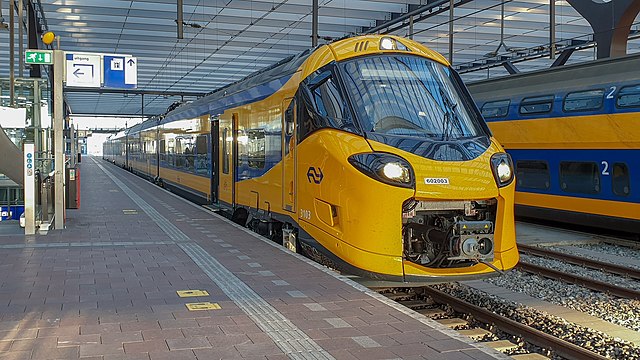Bordercollie
Senior Member
Do they activate the crossing at the station from the cab? Are they all the same frequency?Today's test train to London.
Track speed is a bit of an issue.
Do they activate the crossing at the station from the cab? Are they all the same frequency?Today's test train to London.
you can thank CN for the slow speeds. They’ve done an awful job at maintaining the Guelph subdivisionDo they activate the crossing at the station from the cab? Are they all the same frequency?
Track speed is a bit of an issue.
The station building for Stratford station is REALLY nice. I’d love to see it get more useToday's test train to London.
I'm not saying GO Transit is profitable, I'm saying it's operating costs are lower.GO loses money on this operation (its subsidized); VIA was not given the $ or the mandate to offer more attractive pricing.
VIA is already subsidized and is controlled by the federal government. Why would the province who already owns a passenger rail carrier where it can call all the shots and make cost effective decisions, decide to subsidize the federal government's passenger rail carrier? Would this VIA service from Toronto to Niagara Falls use Bombardier/Alstom crews, double deck trains, and tight seat pitch to keep costs per passenger as low as possible? If the province wanted to run trains to Niagara with comfy seats it wouldn't need to pay VIA to do it because GO has greater efficiencies of scale than VIA. GO has more locomotives than VIA, and runs more DMUs than VIA. What expertise would the province be getting by outsourcing the Niagara run to VIA?I don't think the comparison is particularly fair.
If the government of Ontario provided VIA with the same per passenger subsidy it will provide Mx; then the price would be lower and more attractive.
Along these lines, I am starting to think that between Niagara, London and the northern stuff a Metrolinx owned/operated fleet of Charger sets equivalent to the new corridor units could make a lot of sense.If the province wanted to run trains to Niagara with comfy seats it wouldn't need to pay VIA to do it because GO has greater efficiencies of scale than VIA. GO has more locomotives than VIA, and runs more DMUs than VIA. What expertise would the province be getting by outsourcing the Niagara run to VIA?
It could, except that GO has adopted a 610mm platform height standard for future level boarding, so it would be very inconvenient to use Siemens Venture coaches which have a 1220mm floor height. Due to their (in my opinion short-sighted) choice of 610mm, all future trains should be low-floor to avoid the need for wheelchair lifts.Along these lines, I am starting to think that between Niagara, London and the northern stuff a Metrolinx owned/operated fleet of Charger sets equivalent to the new corridor units could make a lot of sense.

If the province wanted to run trains to Niagara with comfy seats it wouldn't need to pay VIA to do it because GO has greater efficiencies of scale than VIA. GO has more locomotives than VIA, and runs more DMUs than VIA. What expertise would the province be getting by outsourcing the Niagara run to VIA?
Like I said before, GO needs a long haul fleet if they are to expand. Nobody wants to sit on a GO transit seat for more than half an hour unless they absolutely have to.
Sitting on the GO train to Niagara is cramped and uncomfortable but it is the cheapest way out there. The problem is that more leg room, reclining seats and attendants cost money. That would add alot to both the requirements and the ticket price.
I doubt anyone would want to pay VIA rail prices for GO transit service .
Like I said before, GO needs a long haul fleet if they are to expand. Nobody wants to sit on a GO transit seat for more than half an hour unless they absolutely have to.
Sitting on the GO train to Niagara is cramped and uncomfortable but it is the cheapest way out there. The problem is that more leg room, reclining seats and attendants cost money. That would add alot to both the requirements and the ticket price.
I doubt anyone would want to pay VIA rail prices for GO transit service .
Sorry, after a trip to/from London on VIA in June for the first time in decades, prefer GO seats over VIA. Hell, the GO Seats where better than the seats in a new VW Passat that I sat in for a month. Had no issues with seats to/from NF. Each to their own type of seats.
The GO train is using the KW line, lots of real slow time until the tracks are brought up to current standards.
As a note, it being cost Metrolinx $144 to subsidized riders during the COVID-19 mess and should start to fall starting in Sept.
This is awesome.Today's test train to London.




